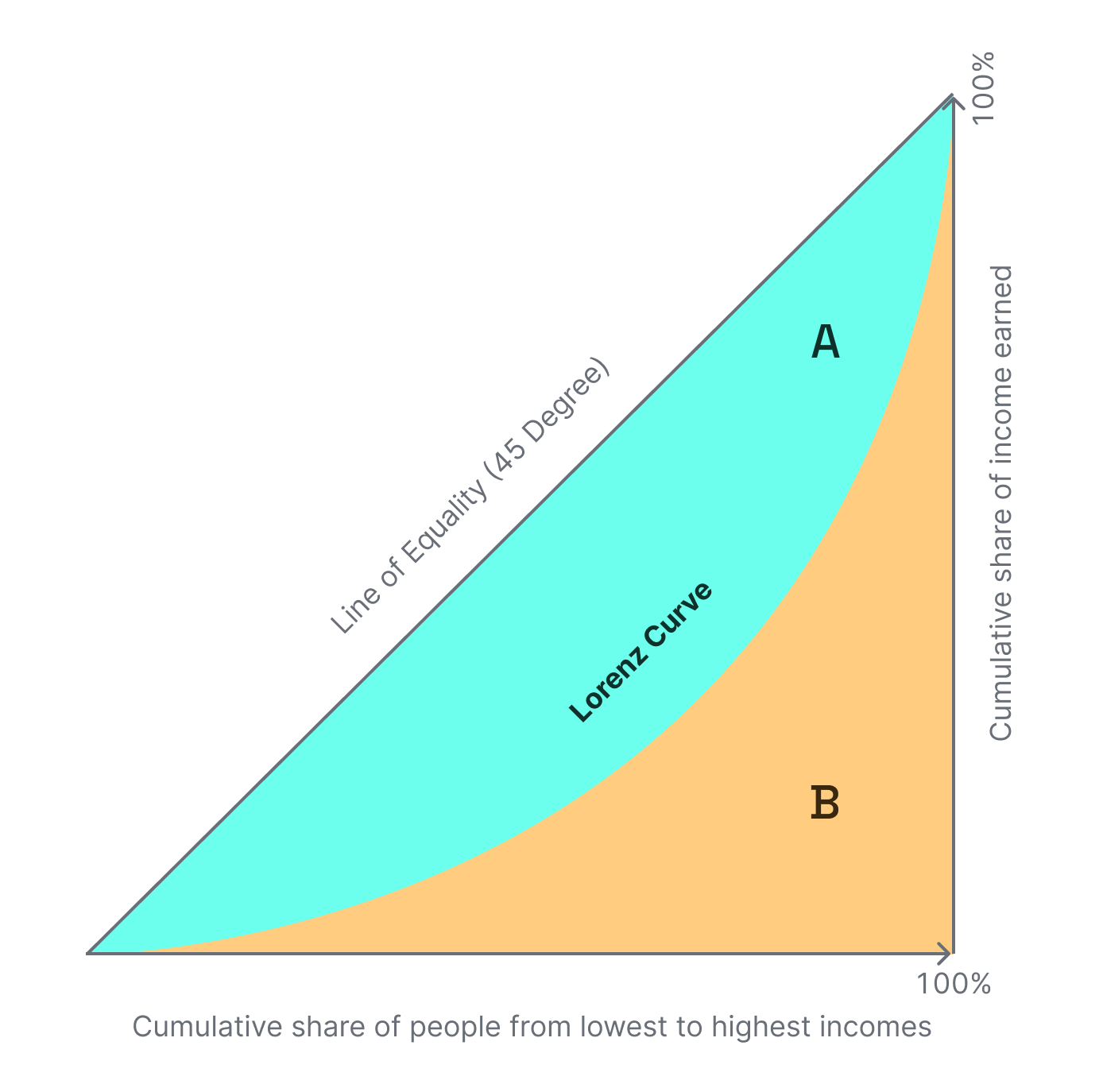Interpreting the Gini
A Gini coefficient of 0 reflects perfect equality, where all income or wealth values are the same, while a Gini coefficient of 1 (or 100%) reflects maximal inequality among values.Gini calculation
We first take the stake weight of each of the validators on the latest day and rank in descending order accordingly. We then use the 1-2B formula for measuring Gini, where B is the area under the Lorenz curve such that:
The shape of a Lorenz Curve.

